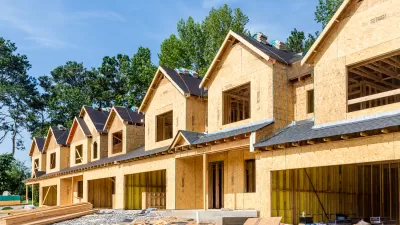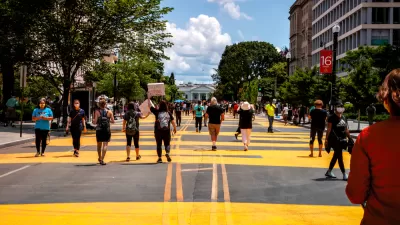In an age of increasingly distracted drivers, it's getting ever more hazardous to ply America's urban roads. The eighth annual “America’s Best Drivers Report,” issued by Allstate Insurance, explores exactly which cities are the most dangerous.
Whether explained by its large number of non-native residents or, perhaps, its confusing system of roads planned long before the advent of the horseless carriage, Washington D.C. has the dubious distinction of being home to America's most dangerous drivers.
According to Jim Gorzelany, "Allstate studied the auto insurance claims frequency of America's 200
largest cities and found that residents of our nation's capitol were
found to get into collisions on average once every 4.7 years. This means
they're a whopping 112.1 percent more likely to be party to an accident
than the typical driver in the U.S., who wrecks his or her car once
every 10 years."
"Taken on a state-wide basis, California would seem to have the worst
drivers overall, placing five cities among the top 25, including
Glendale (5), San Francisco (10), Los Angeles (14), Fullerton (16) and
Torrence (22). New Jersey came in a close second with four cities among
the top 25, with Florida and Virginia tied for third with three cities
each."
"Meanwhile, the safest drivers can be found trolling the streets of Sioux
Falls, South Dakota, where the average motorist experiences a collision
only once every 13.8 years, which is 27.6 percent less likely than the
national average. Other top-five safest cities include (in order):
Boise, ID; Fort Collins, CO; Madison, WI and Lincoln, NE."
FULL STORY: Cities With The Worst Drivers 2012

Pennsylvania Mall Conversion Bill Passes House
If passed, the bill would promote the adaptive reuse of defunct commercial buildings.

Planning for Accessibility: Proximity is More Important than Mobility
Accessibility-based planning minimizes the distance that people must travel to reach desired services and activities. Measured this way, increased density can provide more total benefits than increased speeds.

Fair Housing Cannot Take a Back Seat to ‘Build, Baby, Build’
If we overlook fair housing principles in the plan to build US housing back better, we risk ending up right back where we started.

LA Metro Board Approves New 710 Freeway Plan
The newest plan for the 710 corridor claims it will not displace any residents.

Austin’s Proposed EV Charging Rules Regulate Station Locations, Size
City planners say the new rules would ensure an efficient distribution of charging infrastructure across the city and prevent an overconcentration in residential areas.

Making California State Parks More Climate-Resilient
A recently released report offers recommendations for keeping state parks healthy and robust, including acquiring additional land for conservation and recreation.
City of Costa Mesa
Licking County
Barrett Planning Group LLC
HUD's Office of Policy Development and Research
Mpact Transit + Community
HUD's Office of Policy Development and Research
Tufts University, Department of Urban and Environmental Policy & Planning
City of Universal City TX
ULI Northwest Arkansas
Urban Design for Planners 1: Software Tools
This six-course series explores essential urban design concepts using open source software and equips planners with the tools they need to participate fully in the urban design process.
Planning for Universal Design
Learn the tools for implementing Universal Design in planning regulations.


























